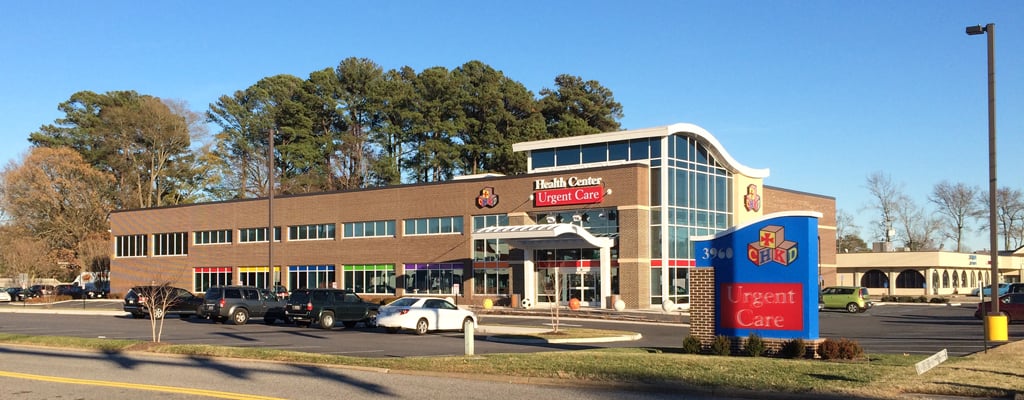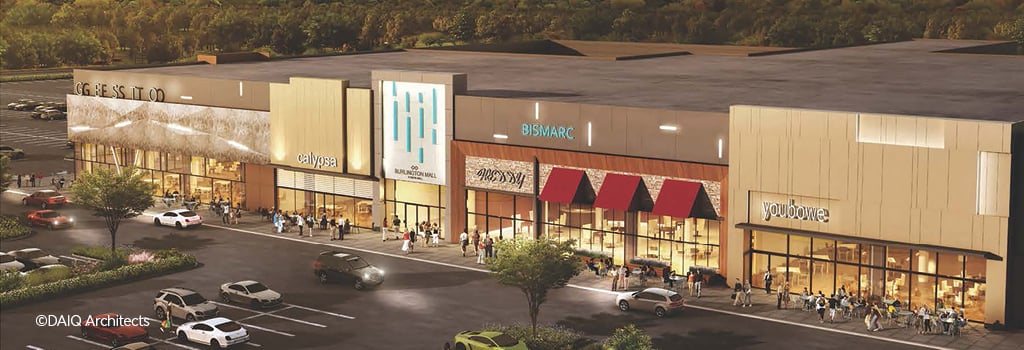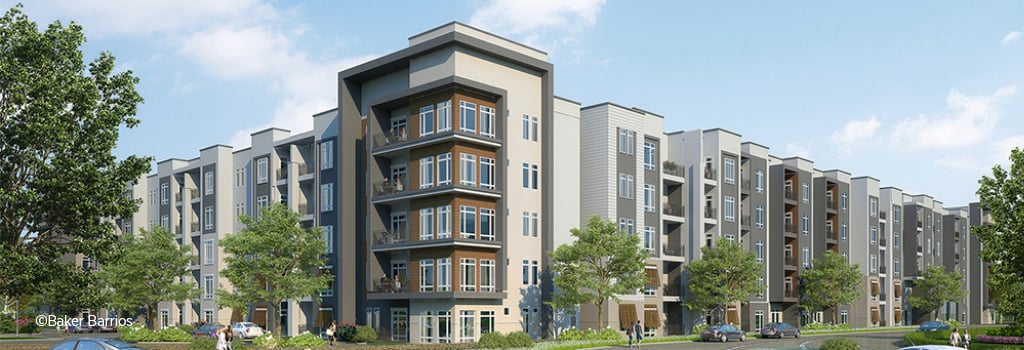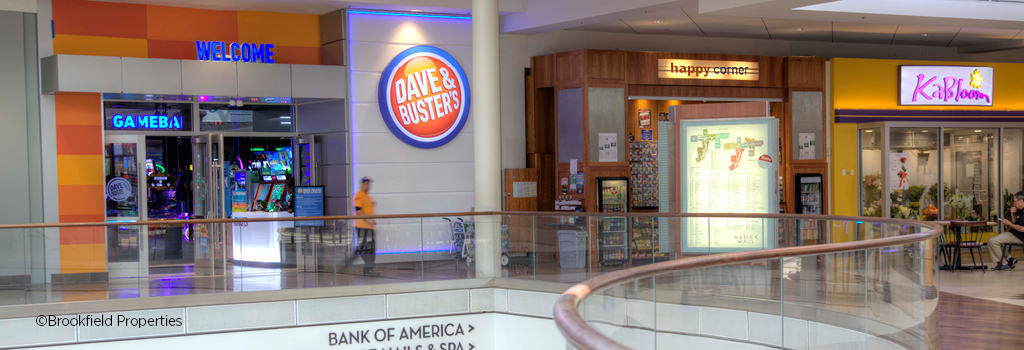Forward-thinking insights focused on a more sustainable tomorrow.
Repositioning Big Box Retailers: Transforming Dark Boxes Into Valuable Assets
The Retail Landscape
In the past decade, the retail industry has experienced major transformation. Demographic changes, the shifts toward convenience for essential goods, and the move towards experiential retail have led to changes in consumer behavior. As a result, major mall owners have reinvented retail centers, creating more active spaces. Vitality has been infused into underperforming assets through the addition of entertainment hubs, restaurants, gyms, and spas.
Another disruptor to the retail industry is the rapid advances in technology, which have led to the growth in e-commerce and the rise of omnichannel shopping, impacting big box retailers (BBRs) nationwide. In the past few years, Sears, Neiman Marcus, JCPenney, and Lord & Taylor have all filed for bankruptcy. BBRs were further impacted by COVID-19, which accelerated national and regional chain store closures, leaving vacancies at malls across the country and in regional corridors.
As BBRs continue to shutter their doors, owners are reimagining their properties to create valuable assets that will serve the broader needs of the community. Planning is essential to unlock the value of these real estate assets, and this requires an understanding of the site’s zoning, development capacity, and the opportunities to reposition or redevelop a property.
Increasing Asset Value
Vacant mall anchors and stand-alone boxes can be used as a catalyst to expand community offerings, create exciting new destinations, and fulfill the needs of businesses that are expanding geographies. Partnerships with communities are increasingly more important to better understand the needs of the market and enhance the consumer experience. The benefits of repositioning BBRs include:
Dynamic Destinations—BBRs are being reprogrammed with a mix of tenants that better serve communities. Vacant anchors can be converted into grocers and entertainment uses that draw more foot traffic. In addition, many anchors are being retrofitted for healthcare providers who are expanding urgent care centers in the suburbs to service members outside the urban core.
Increased ROI—Retail leases typically contain co-tenancy provisions, which stipulate that anchor stores remain fully leased to drive foot traffic to centers. When anchors go dark, smaller tenants may seek remedies such as reduced rents, which will decrease operating income. Through the conversion of big boxes, owners will increase revenue by bringing in new tenants that command higher rents.
Mixed-Use—Owners are evaluating opportunities to redevelop their BBRs with higher density. Major malls with dark anchors are being rezoned and redeveloped to accommodate a mix of uses and growth in the demand for non-traditional uses such as office, medical, grocers, and entertainment space to increase visitor frequencies.
Housing Demand—Mall locations are generally ideal for residential uses as they are centrally located with public utilities and strong transportation connections. Many communities have a housing shortage, and vacant boxes provide an opportunity to redevelop a portion of a mall to address changing demographics and market demand. The incorporation of a residential community, both multifamily and affordable housing options, will in turn support retail sales.

Community Use Facilities—Owners may be able to help communities address unmet needs through the development of new facilities. In McAllen, Texas, an abandoned Walmart was purchased by the city and turned into a 123,000-square-foot public library.
Market Penetration—Retailers who are experiencing growth will be able to penetrate key markets by leasing obsolete boxes that have been modernized. Target is absorbing space abandoned by KMart in New Hampshire and Maine and penetrating key markets through the conversion of empty boxes to contemporary stores.
E-commerce—Stand-alone big boxes are viewed as opportunities for last mile space for growing retailers who are investing in fulfillment centers. In Hampton, Virginia, an abandoned Super KMart is being repositioned for an Amazon 100,000-square-foot last mile delivery center, which will bring 200 full-time jobs to the region. Since malls may not be currently zoned for industrial uses, stand-alone boxes are ripe for conversion. BBRs located at malls will have several hurdles to overcome, including rezoning, logistical issues (such as how to fit in loading docks and accommodate truck traffic along with cars and pedestrians in parking lots), and co-tenancy issues or lease agreements with retailers that depend on the owners having a retail anchor.
Multi-Tenant Approach—If a particular property is unlikely to attract one tenant to fill the entire space, another option is to divide a big box into space for multiple tenants. For example, when a Sears closed at the Burlington Mall in Massachusetts, the store was repositioned to accommodate several new restaurants and a mix of services. In addition, the freestanding Sears Automotive Center was transformed into The Village, containing destination attractions, home goods, services, fast-casual eateries, as well as outdoor gathering space for community events. These businesses are perfectly suited to this community-focused shopping center and allow the owner to increase revenues from space that no longer supported one large retailer.

Economic Development—Repositioning BBRs will often result in the creation of new jobs and bring additional tax revenue to the community. Vacancies have garnered interest from governing municipalities and local stakeholders looking to reclaim the land for the betterment of the overall community. In 2020, the Norfolk Economic Development Authority (EDA) purchased the former DoubleTree Hotel at Military Circle Shopping Mall and issued a request for qualifications for the redevelopment of the Military Circle Mall property. The acquisition gave the EDA the site control required to reposition the entire property.

Unlocking Development Potential
As we look to the future, owners are examining a wide variety of repositioning and redevelopment options to unlock the value of BBRs. Careful planning is essential for owners to create sustainable developments. Developers are collaborating with planners, engineers, and architects to create great places and spaces which draw foot traffic. While favorable leasing can attract the right tenants, it’s important to recognize the challenges involved with repositioning a big box for alternate uses. Key considerations include:
Control of the Real Estate Asset—Anchor stores often own their real estate. When a big box files for bankruptcy, mall owners need to negotiate the purchase of the property to have the rights to fully redevelop the space.
Planning & Local Zoning—Many anchor boxes have not been remodeled since they were originally constructed. New uses for BBRs will trigger local zoning and municipal review. Industrial or residential may require the property to be rezoned. Since retail districts are important parts of the regional economy, communities are invested in their vitality. Governing agencies might consider increasing land use density via tax incentives. Partnerships with municipalities and economic development agencies are essential to secure the entitlements that will enable the BBRs to be repositioned or redeveloped into a higher density use.
Architectural Design—Big Boxes are designed for a retailer’s specific requirements. Architectural and engineering teams design storefront width, column spacing, and ceiling heights, which support specific uses. The design of the box can sometimes pose a challenge for a property’s re-tenanting.
Infrastructure—If a box is not being re-tenanted for retail, the demands for infrastructure go up. Owners need to understand site constraints and existing capacity to determine the investments in infrastructure required to support a new use. Utility upgrades, such as additional water and sewer capacity, may be necessary to support a grocer, restaurant, athletic facility, or residential community. For example, a restaurant may require grease traps, while an athletic facility with pools may require additional wastewater capacity to accommodate discharge for maintenance and draining. Owners and design teams need to be aware of the last time the site has applied for a permit. A new tenant or use may also require system upgrades to get the property into compliance with current standards that have changed since the site was built.
Parking, Traffic, & Transportation—Parking and traffic analyses can show how a new tenant or use will creatively balance the demand for space throughout the year, including peak seasons and peak hours, to meet zoning requirements. Simulations are an effective tool to communicate the potential demands of a new tenant. For example, heavy traffic and parking at malls during the holiday season begins to give way to the post-New-Years-resolution peaks at fitness clubs. Through an understanding of the peaks and demands of different tenants, owners can better program the environment and meet zoning regulations, as well as the needs of other tenants. Offsite roadway improvements, such as signals, are often important to increase access from surrounding roadway networks and improve throughput.

Business Continuity—Phased utility upgrades are important during the redevelopment process as retail centers need to stay open for business, while simultaneously delivering new space to meet opening day schedules. Owners should work with new tenants early on to understand their needs. Utilities, such as electrical, gas, and water, may be based on record drawings, so flexibility is required during construction. Mall infrastructure was often placed in the ring roads, so it is challenging to fit in new utilities and requires innovative design.

How VHB Can Help
Asset repositioning is a sustainable approach that positively addresses economic, environmental, and social equity issues by reimagining the built environment. Big box closures present owners with the opportunity to reposition dark boxes and create valuable real estate assets. As we look to the future, owners and investors are incentivized to work with communities to develop creative solutions to reposition and re-tenant BBRs and redevelop their centers to create more dynamic community hubs. Shifts in consumer behavior necessitate the reinvention of BBRs to provide vitality of regional malls and to confirm that stand-alone boxes do not become vacant eyesores in heavily trafficked regional corridors. The continued success of retail is essential to a community’s tax base and creates jobs for the region, while offering valuable services to the area.
Owners recognize that instore retail is still the dominant retail channel, and it’s a part of the customer journey. As they contemplate redevelopment options for their anchors and centers, placemaking has become increasingly important. Owners are investing in outdoor living rooms and green spaces which will accommodate programming and community events, such as movie nights, bocce, musical performances, and winter ice rinks. Placemaking will also enhance aesthetics and help with attracting and retaining new tenants through the creation of destinations where consumers want to linger.
For more than 40 years, VHB has partnered with leading developers and retailers to unlock the value of their retail centers—creating some of the most exciting destinations in the country. Through a deep understanding of the development process, land use, and local regulations, we work with our clients to maximize their development program, secure permits, solve traffic and access issues, and develop community spaces that add value and create a great retail and entertainment experience. We also partner with our clients to transform obsolete boxes into revenue generating assets for a variety of end users. Are you faced with asset repositioning challenges? Contact Justin Dufresne to start planning for tomorrow.



